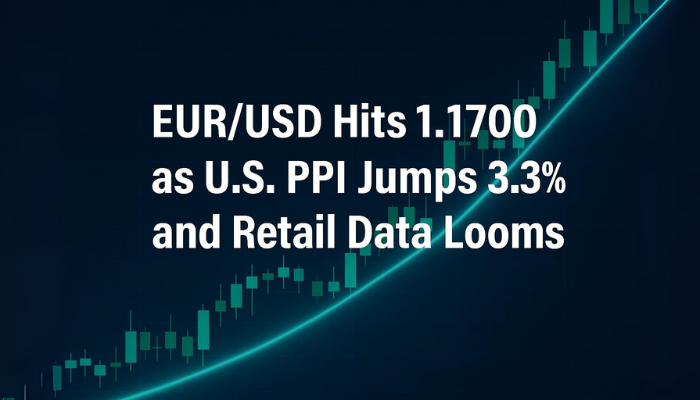The EUR/USD pair held steady near 1.1700 on Friday, supported by a softer dollar in the wake of mixed U.S. economic indicators. While producer inflation data showed a sharper rise than expected, consumer sentiment and retail figures provided little momentum for the greenback, allowing the euro to remain in positive territory.
Technical signals underscore investor indecision. The Relative Strength Index (RSI) sits just above 50, while the pair continues to hover near its 200-period Simple Moving Average (SMA). This reflects a cautious trading environment, with neither buyers nor sellers firmly in control.
Resistance for the pair is clustered at 1.1720, 1.1760, and 1.1800, while support levels lie at 1.1660–1.1650, 1.1620, and 1.1600. Market watchers suggest that a decisive break in either direction could set the tone for the coming week.
Inflation Pressures Shift Fed Outlook
The dollar briefly gained momentum on Thursday after the Producer Price Index (PPI) jumped 3.3% year-over-year in July, well above the 2.5% consensus and higher than June’s 2.4% rise. On a monthly basis, both the headline and core PPI climbed 0.9%, signaling persistent cost pressures in the U.S. economy.
The data forced traders to reconsider the Federal Reserve’s policy path. According to the CME FedWatch Tool, the probability of three rate cuts this year dropped to below 45%, down from nearly 55% before the inflation release. The shift underscores how sticky price pressures remain a challenge for the Fed, even as growth indicators soften.
Retail and Sentiment Data in Focus
Investors now turn to fresh readings on July Retail Sales and the University of Michigan Consumer Sentiment Index for direction. Analysts expect retail sales to rise 0.5%, but a print above 1% could strengthen the dollar and cap EUR/USD’s advance.

Key drivers traders are watching:
- Retail sales: Surprise growth above 1% may lift the dollar.
- Consumer sentiment: UoM’s preliminary August index to gauge household confidence.
- Inflation expectations: A sharp drop in one-year consumer inflation forecasts could weigh further on the dollar.
For now, the euro’s strength reflects not only U.S. data uncertainty but also investor positioning ahead of critical economic releases. With volatility building, the 1.1700 mark serves as a pivotal level for the pair as traders assess whether the Fed can balance inflation control with slowing momentum in the broader economy.


